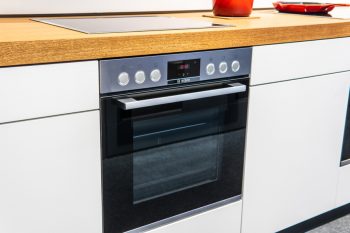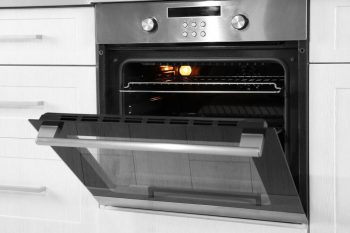
When it comes to kitchen appliances, choosing the right size can make all the difference. This is especially true for microwaves, where the dimensions can greatly impact cooking capabilities and kitchen space. In this comprehensive guide, we delve into the specifics of small microwave sizes, their functionality, benefits, limitations, and some of the top-rated models available in the market.
A small or compact microwave typically has external dimensions of around 12-16 inches deep, 15-19 inches wide, and 10-12 inches tall. The interior capacity usually ranges from 0.5 to 0.9 cubic feet. These measurements make them suitable for small spaces such as dorms, apartments, and RVs.
Understanding Microwave Sizes
Microwave sizes are generally determined by their exterior dimensions (width, height, and depth) and interior capacity. The interior capacity is measured in cubic feet or liters, providing an indication of how much food can be cooked at once.
Small microwaves, also known as compact microwaves, typically have external dimensions of around 12-16 inches deep, 15-19 inches wide, and 10-12 inches tall. The interior capacity usually ranges from 0.5 to 0.9 cubic feet. These measurements make compact microwaves suitable for small spaces such as dorms, apartments, and RVs.
For example, the SMETA Microwave Oven, a popular small microwave model, has external dimensions of 17.56 x 12.72 x 9.57 inches and an internal dimension of 12.17 x 11.73 x 7.95 inches.
Typical Uses of a Small Microwave
Despite their compact size, small microwaves are versatile and can perform a variety of tasks:
- Reheating food: The most common use of a microwave, efficiently reheating food while retaining essential nutrients.
- Cooking: From vegetables to meat and eggs, microwaves can cook a variety of foods.
- Melting or softening butter: Quick and easy, perfect for recipes.
- Toasting and crisping nuts: Adds flavor and texture to your meals.
- Steaming vegetables: Fast and simple, with less water needed.
- Poaching and scrambling eggs: Ideal for quick breakfasts.
- Decrystallizing honey: Revive hardened honey in no time.
- Sanitizing kitchen items: Kills bacteria and germs on sponges and cutting boards.
With an average power rating of 600-800 watts, small microwaves are suitable for these tasks in smaller spaces such as RVs, hotel rooms, or compact kitchens.
Benefits of a Small Microwave
Small microwaves come with several benefits:
- Space-saving: They require less countertop space, perfect for small kitchens, dorm rooms, or offices.
- Portability: Lighter and easier to move, ideal for renters or frequent kitchen rearrangements.
- Lower energy consumption: Lower wattage can result in reduced energy consumption.
- Cost-effective: Usually more affordable than larger models.
- Convenience: Despite their size, they still offer a range of features and functionalities.
Limitations of a Small Microwave
Despite their benefits, small microwaves do have some limitations:
- Compact cooking space: May not accommodate tall bowls or pans.
- Limited capacity: May not be suitable for large families or large meals.
- Uneven heating: Some models may not heat food evenly.
- Limited cooking capabilities: May not handle certain cooking tasks such as baking or deep frying.
- Inability to accommodate large dishes: May limit the types of meals you can prepare.
Top-Rated Small Microwave Models
Here are some top-rated small microwave models available in the market:
- Toshiba Smart Sensor Microwave: Best small microwave overall due to its performance and features.
- BLACK+DECKER Digital Microwave: Known for its accuracy and precise cooking results.
- COMFEE’ Countertop Microwave: A budget-friendly option with good performance.
- Panasonic Microwave Oven with Inverter Technology: Highly recommended for its overall performance and advanced technology.
- Commercial Chef Countertop Microwave: Provides good value for money.
- Galanz GLCMKA07BER-07: A retro-style microwave that is both visually appealing and efficient.
- Danby DDMW007501G1: Stands out for its speed-of-heating performance.
In conclusion, while the size of a microwave can impact its functionality, compact microwaves offer a range of benefits that make them a great fit for smaller spaces or for those who use their microwave for simple cooking tasks. Consider your specific needs, preferences, and kitchen space when choosing the right microwave size for you.
Frequently Asked Questions
What is the wattage of a small microwave?
Small microwaves typically have an average power rating of 600-800 watts.
What are the typical dimensions of a small microwave?
Small microwaves, or compact microwaves, generally have external dimensions of around 12-16 inches deep, 15-19 inches wide, and 10-12 inches tall.
What can a small microwave be used for?
Despite their compact size, small microwaves can be used for a variety of tasks such as reheating food, cooking, melting or softening butter, toasting and crisping nuts, steaming vegetables, poaching and scrambling eggs, decrystallizing honey, and even sanitizing kitchen items.
What are some limitations of a small microwave?
Small microwaves have some limitations such as compact cooking space, limited capacity, uneven heating in some models, limited cooking capabilities, and inability to accommodate large dishes.
What are some benefits of a small microwave?
Small microwaves offer several benefits including space-saving, portability, lower energy consumption, cost-effectiveness, and convenience despite their size.
Can you recommend some top-rated small microwave models?
Some top-rated small microwave models include the Toshiba Smart Sensor Microwave, BLACK+DECKER Digital Microwave, COMFEE’ Countertop Microwave, Panasonic Microwave Oven with Inverter Technology, Commercial Chef Countertop Microwave, Galanz GLCMKA07BER-07, and the Danby DDMW007501G1.












